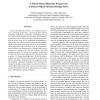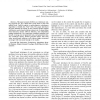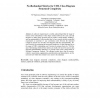37 search results - page 2 / 8 » The Optimal Class Size for Object-Oriented Software |
WCRE
2003
IEEE
13 years 10 months ago
2003
IEEE
A large number of metrics have been proposed for measuring properties of object-oriented software such as size, inheritance, cohesion and coupling. We have been investigating whic...
IWPC
2006
IEEE
13 years 11 months ago
2006
IEEE
One of the important activities in re-engineering process is detecting design flaws. Such design flaws prevent an efficient maintenance, and further development of a system. Th...
IWPC
2000
IEEE
13 years 9 months ago
2000
IEEE
Call graphs are commonly used as input for automatic clustering algorithms, the goal of which is to extract the high level structure of the program under study. Determining the ca...
ICST
2010
IEEE
13 years 3 months ago
2010
IEEE
Abstract—This paper presents TestFul, an evolutionary testing approach for Java classes that works both at class and method level. TestFul exploits a multi-objective evolutionary...
CAISE
2003
Springer
13 years 10 months ago
2003
Springer
In software engineering it is widely acknowledged that the usage of metrics at the initial phases of the object oriented software life cycle can help designers to make better decis...



